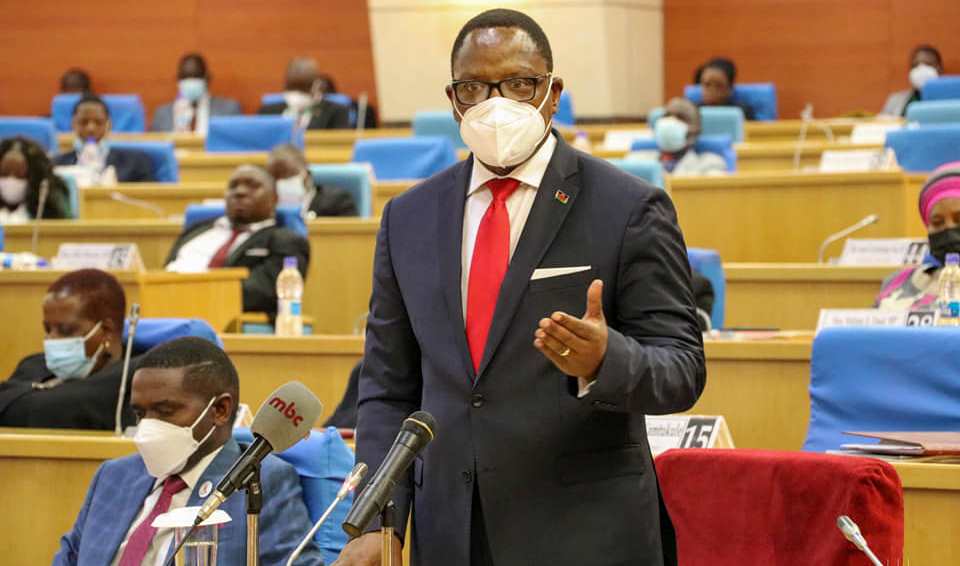While the macroeconomic assumptions envisaged by government for the 2022/23 fiscal year appear credible, realising the same will be difficult as the economy is exposed to risks, analysts and industry insiders have said.
When presenting the 2022/23 budget statement in Parliament last week Minister of Finance and Economic Affairs Sosten Gwengwe made a number of assumptions for the 2022/23 fiscal year, projecting that the economy will register an increased growth rate of 4.1 percent in 2022 and four percent in 2023.
Gwengwe also projected that inflation rate will average 9.1 percent while the Policy rate—rate at which government borrows from the central government as lender of last resort—will average in the 2022/23 fiscal year.
But Economics Association of Malawi (Ecama) executive director Frank Chikuta in an interview on Wednesday said while the projections could be attainable there are significant risks, especially for the 2022 growth.
He said: “There are risks related to both the agriculture and non-agriculture components of Gross Domestic Product. The agriculture risks could grossly affect the performance of the agriculture sector while the non-agriculture risks could affect the performance of the manufacturing and other sectors which rely on electricity to perform well.”
Chikuta further said the 9.1 percent annual inflation projection is also on the lower side as it is premised on expected good performance in agriculture and its reducing effect on food inflation.
“Given the risks to the agriculture sector alluded to in the foregoing, food inflation may not reduce much if the agriculture sector does not perform well. Also in view of the fact that monetary policy has recently been accommodative, inflationary pressures may persist,” he said.
On its part, Malawi Confederation of Chambers of Commerce and Industry (MCCCI) also observed that the current inflation assumption is unrealistic and ought to be revised to match the situation on the ground.
Said the Chamber: “It is evident that significant inflation pressures exist both from domestic and external factors.
“Even though domestic pressures arising from food inflation have been deemed transitory on account of seasonal factors, recently experienced unfavorable weather patterns including tropical storm Ana have complicated matters and food price pressures could last longer than anticipated. “
According to the MCCCI high energy price pressures and dampening exchange rate pressure also add to the inflation risks.
“Further to this, taking into account the elevated inflation pressures, the MCCCI is of the view that it is over-optimistic to assume that the policy rate will remain at 12 percent in the 2022/2023 fiscal year,” reads their statement in part.
Weighing in Malawi University of Business and Applied Sciences economics lecturer Betchani Tcherani also argued that assumptions may seem unrealistic especially when considering the overdependence on subsistence agriculture.
“If we are basing the growth assumption on the diversification taking place, such as the mining industry, the cannabis, the service sector and manufacturing industries which are taking shape, then these assumptions may even be an understatement.
“But if the current environment continues, we do not expect miracles, the assumptions may not hold,” he said.
Malawi experienced ever worsening and volatile exchange rates, persistently high inflation rates and subdued growth in the current financial year.
Meanwhile, the country’s year-on-year headline inflation stands at 12.1 percent up from 11.5 percent recorded in December on account of rising food and non-food prices.
RBM has however indicated that although inflation pressures are mounting, the sources are considered transitory and likely to dissipate after the lean period.
At the first Monetary Policy Committee (MPC) meeting RBM Governor Wilson Banda admitted that in the period ahead, pressures on inflation are likely to continue, mainly arising from a seasonal increase in prices of domestically produced food items, and imported inflation.
The RBM, custodians of the monetary policy, have projected that headline inflation would average 10.4 percent in 2022, up from 8.9 percent projected during the fourth MPC meeting.
The post Govt’s macroeconomic under microscope appeared first on The Nation Online.
 Moni Malawi
Moni Malawi 

